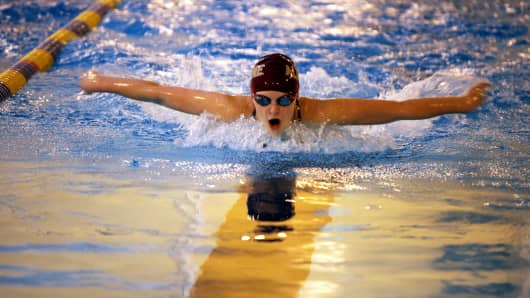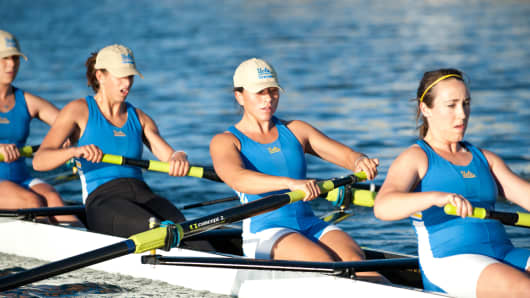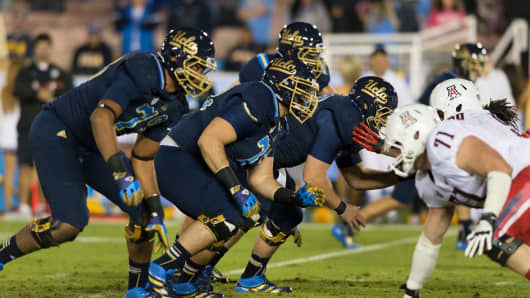Most athletes want to keep their scholarships, but the demands of high-level college athletics can be challenging.
Some students will end up transferring to other schools where they feel they'll be under less pressure or get more playing time, or both. In men's basketball (which has unusually high transfer rates), 14.5 percent of NCAA Division 1 players in 2012–2013 were transfers from 2–year colleges and 13.3 percent came from 4–year schools. Among female basketball players, 7.5 percent of Division 1 players were transfers from 2-year schools and 8.6 percent from four-year colleges.
Even for those who are committed to sticking with their teams, the amount of time required of them can be tough to manage.
Nicole Sung-Jereczek started rowing in high school, having competed as a gymnast through middle school, and found she loved the sport and the close teamwork. When she became a rower at UCLA after being recruited with a scholarship covering about three–fourths of her costs, many things about the team exceeded her expectations. "I didn't expect to have such great bonds with my teammates," she said. She was also surprised at "how much the athletic department at UCLA worked to help me succeed academically and athletically," providing trainers, tutors, and more.
Even so, Sung-Jereczek said, the college commitment was formidable. "I didn't expect or anticipate the amount of time that I would have to devote to it," she said, of her time spent rowing at UCLA. Her commitment meant she couldn't get a part-time job or internship, she said, and severely limited her social life. "I didn't expect or anticipate that I would only be rowing or studying."
Plenty of athletes share that experience. In a survey of college athletes by the NCAA asking what students wished they could have changed about their college sports experience, the most common responses were about time. Another NCAA survey found that a typical NCAA athlete in-season spends 39 hours a week on academics—and 33 hours a week on sports.
Sung-Jereczek graduated from UCLA last spring, having rowed all four years on a scholarship that she said covered roughly three-fourths of her college costs. But she estimated that roughly 30 percent of the people she started with in her freshman year did not stay on the team that long—even in a sport where teammates are unusually reliant on each other.
She's proud that she rowed through college, and she managed to land a job at a sports management company after graduation. But Sung-Jereczek said she definitely thought about quitting along the way. "It's something my teammates and I always struggled with," she said, what with bus rides to the marina at 5:30 in the morning, 20 hours of practice every week, and frequent travel to races and competitions. "It's really hard for people to stick with it."
Her sister is rowing at UCLA now, Sung-Jereczek said, and wants to row all four years. "She's determined to, but you never know what happens."









